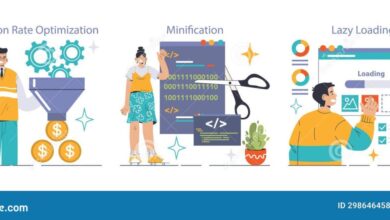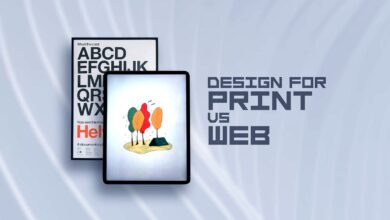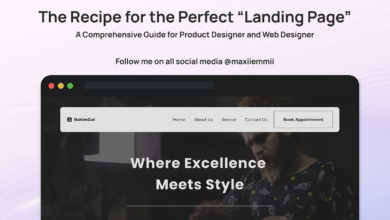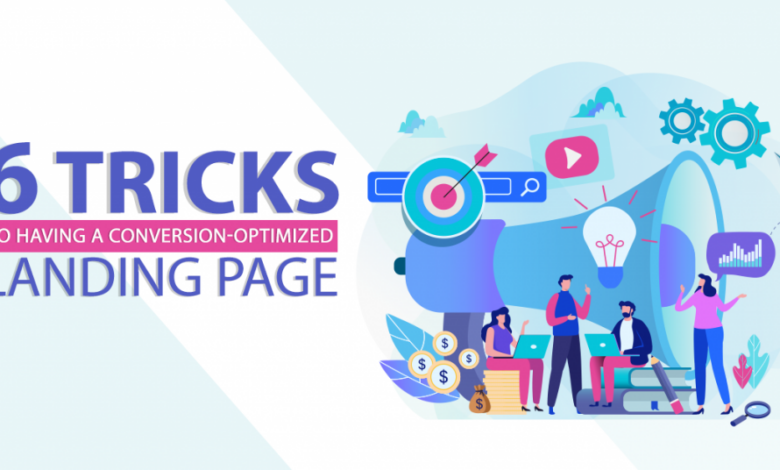
Landing Page Mind Games Boost Conversions
Landing page mind games – it sounds a bit sneaky, right? But understanding the psychology behind effective landing page design isn’t about trickery; it’s about crafting an experience that resonates with your visitors. We’ll dive into the fascinating world of persuasion, exploring how subtle tweaks in design and copywriting can dramatically increase your conversion rates. Get ready to learn how to subtly guide your audience towards a positive action, all while maintaining ethical and transparent practices.
This post unpacks the power of psychology in landing page design, from understanding cognitive biases and visual hierarchy to crafting compelling headlines and calls to action. We’ll explore A/B testing methodologies, analyze successful case studies, and discuss the ethical considerations involved in using psychological principles to boost conversions. By the end, you’ll have a toolkit of strategies to create landing pages that not only look great but also convert exceptionally well.
Understanding the Psychology Behind Landing Page Design: Landing Page Mind Games
Landing page design isn’t just about aesthetics; it’s a deeply psychological process aimed at influencing user behavior and driving conversions. Understanding the principles of persuasion and the cognitive biases that shape our decisions is crucial for creating effective landing pages that resonate with your target audience. By leveraging these principles, you can subtly guide visitors towards the desired action, whether it’s making a purchase, signing up for a newsletter, or requesting a demo.
Principles of Persuasion and Cognitive Biases, Landing page mind games
Persuasion principles, such as reciprocity (the feeling of obligation to return a favor), scarcity (the perceived value of something limited), and authority (trusting experts), significantly impact user behavior on landing pages. Cognitive biases, like confirmation bias (favoring information confirming existing beliefs) and anchoring bias (over-relying on the first piece of information received), also play a crucial role. For instance, a landing page highlighting social proof (testimonials and reviews) taps into the reciprocity principle and reduces uncertainty, mitigating the impact of cognitive biases.
Similarly, showcasing limited-time offers leverages the scarcity principle, creating a sense of urgency and encouraging immediate action. The strategic use of these principles, when combined with clear calls to action, increases the likelihood of conversion.
Impact of Visual Hierarchy and Attention-Grabbing Elements
Visual hierarchy dictates the order in which users perceive information on a page. By strategically placing elements, designers can guide the user’s eye towards the most important information – typically the call to action. Attention-grabbing elements, such as vibrant colors, compelling imagery, and clear headings, are used to capture initial attention and maintain engagement. A well-designed visual hierarchy ensures that crucial information, like the value proposition and call to action, are easily noticeable and understandable.
Poor visual hierarchy, on the other hand, can lead to confusion and decreased conversion rates. For example, a landing page with a cluttered layout and inconsistent font sizes will likely fail to engage users effectively.
Examples of Psychological Triggers Used to Encourage Conversions
Several psychological triggers can be employed to encourage conversions. Social proof, as mentioned earlier, uses testimonials and reviews to build trust and credibility. Urgency, often conveyed through limited-time offers or countdown timers, creates a sense of pressure to act quickly. Authority can be established by featuring expert endorsements or showcasing industry awards. Scarcity, through limited availability or stock, increases the perceived value of the product or service.
These triggers work in conjunction to create a compelling narrative that persuades users to take the desired action. A landing page showcasing a successful case study, coupled with a limited-time discount and a prominent call to action, expertly utilizes these triggers.
Comparison of Psychological Techniques and Their Effectiveness
| Technique | Description | Example | Effectiveness |
|---|---|---|---|
| Social Proof | Leveraging testimonials and reviews to build trust. | Displaying customer reviews with star ratings and photos. | High – builds credibility and reduces uncertainty. |
| Scarcity | Creating a sense of urgency by highlighting limited availability or time-sensitive offers. | “Only 5 left in stock!” or “Offer ends in 24 hours!” | High – creates a sense of urgency and FOMO. |
| Authority | Establishing credibility by showcasing expert endorsements or awards. | Featuring a quote from an industry expert or displaying logos of prestigious awards. | Medium – depends on the perceived authority of the source. |
| Reciprocity | Offering something of value upfront to encourage a return favor. | Offering a free ebook or consultation in exchange for contact information. | Medium to High – depends on the perceived value of the offer. |
Crafting Compelling Headlines and Copy
Landing page copy isn’t just about informing visitors; it’s about persuading them to take action. A well-crafted headline and compelling copy are the cornerstones of a successful landing page, guiding users through the sales funnel and ultimately converting them into customers. This involves understanding the psychology of your target audience and crafting messaging that resonates on an emotional level.
Headline Variations Based on Psychological Appeals
Effective headlines tap into different psychological triggers. Here are three variations for a hypothetical productivity app called “FlowState,” each highlighting a distinct appeal:
- Headline 1 (Appeal: Fear of Missing Out – FOMO): “Unlock Your Productivity Potential Before It’s Too Late! Limited-Time Offer Inside.” This headline uses urgency and scarcity to drive immediate action. The implication is that a valuable opportunity will disappear soon.
- Headline 2 (Appeal: Desire for Achievement): “Achieve More in Less Time with FlowState: The Ultimate Productivity App.” This headline focuses on the aspirational aspect of using the app, promising a tangible benefit (increased productivity).
- Headline 3 (Appeal: Social Proof): “Join Thousands of Users Who’ve Already Mastered Their Time with FlowState.” This headline leverages social proof by highlighting the app’s popularity and implied success. It suggests that if others are benefiting, you will too.
Examples of Strong Calls to Action Leveraging Urgency and Scarcity
Calls to action (CTAs) are the final push needed to convert visitors. Urgency and scarcity are powerful motivators.
- “Get Started Now – Limited Spots Available!” This CTA combines urgency (“Get Started Now”) with scarcity (“Limited Spots Available!”).
- “Claim Your Free Trial Before It Expires!” This CTA emphasizes the time-limited nature of the offer, creating a sense of urgency.
- “Only 5 Spots Left! Register Today.” This CTA directly states the limited availability, reinforcing the scarcity principle.
Storytelling to Build Emotional Connections
Storytelling is a powerful tool for connecting with your audience on an emotional level. Instead of simply listing features, a well-crafted narrative can paint a picture of how your product solves a problem or fulfills a need. For example, the FlowState app’s landing page could feature a short story about a busy professional who was overwhelmed until they discovered the app and regained control of their time.
This relatable story creates an emotional connection with potential users, making them more receptive to the product’s value proposition.
Power Words and Phrases for Persuasive Copy
Certain words and phrases have a demonstrably higher impact on persuasion. Using these strategically can significantly enhance your landing page copy.
- Urgency/Scarcity: Limited-time offer, exclusive access, don’t miss out, last chance, while supplies last.
- Authority/Trust: Proven results, expert-recommended, guaranteed, trusted by thousands, award-winning.
- Benefits/Value: Increase productivity, save time, improve performance, achieve your goals, simplify your life.
- Emotionally charged words: Amazing, incredible, revolutionary, powerful, effortless.
Visual Elements and User Experience
A landing page’s visual design is more than just aesthetics; it’s a crucial element influencing conversion rates. A well-designed page guides the user seamlessly towards the desired action, while a poorly designed one can lead to confusion and abandonment. Understanding the psychology behind visual elements is key to creating a high-performing landing page.
Effective visual design hinges on a harmonious blend of color psychology, strategic whitespace, clear visual hierarchy, and appropriate typography. Each element contributes to the overall user experience, impacting how visitors perceive your brand and ultimately, whether they convert.
Color Psychology and User Perception
Color evokes strong emotional responses, influencing user perception and behavior. For example, blue often conveys trust and stability, making it a popular choice for financial institutions. Red, on the other hand, can stimulate excitement and urgency, often used in call-to-action buttons. Green is associated with growth and nature, while yellow can represent happiness and optimism. Understanding these associations allows for targeted color choices that align with your brand and desired user response.
A travel company might use calming blues and greens to evoke feelings of relaxation, while a tech startup might employ vibrant yellows and oranges to project innovation and energy. Inconsistent or jarring color palettes can confuse users and detract from the overall message.
Key Elements of Effective Visual Design
Effective visual design on a landing page focuses on clarity and ease of navigation. Key elements include:
- High-quality images and videos: Visually appealing and relevant media immediately grab attention and enhance engagement. Imagine a landing page for a luxury watch brand showcasing a crisp, high-resolution image of the watch, highlighting its intricate details. The image should be professional and clearly demonstrate the product’s value.
- Clear call-to-action (CTA): The CTA should be prominent, visually distinct, and use compelling action verbs. A brightly colored button with clear text like “Shop Now” or “Learn More” is more effective than a subtly placed link.
- Consistent branding: Maintain consistency in your logo, color palette, typography, and overall style throughout the landing page to reinforce brand recognition and trust.
- Mobile responsiveness: Ensure your landing page adapts seamlessly to different screen sizes and devices. A responsive design provides a consistent and positive user experience across all platforms.
Whitespace and Visual Hierarchy
Whitespace, or negative space, is often underestimated but plays a crucial role in improving readability and visual appeal. Effective use of whitespace creates breathing room, preventing the page from feeling cluttered and overwhelming. It allows users to focus on key elements and improves the overall aesthetic appeal. Consider a landing page with ample whitespace around the headline, subheadings, and images.
This creates a clean, uncluttered look, guiding the user’s eye naturally through the content.Visual hierarchy guides the user’s eye through the page, emphasizing important information. This is achieved through size, color, contrast, and positioning of elements. For example, the headline should be the largest and most prominent element, followed by subheadings and supporting text in decreasing order of importance.
This controlled flow ensures the user absorbs the key information efficiently.
Font Choice and Readability
Choosing the right font significantly impacts readability and user experience. Legible fonts, such as Arial, Helvetica, or Times New Roman, are generally preferred for body text. Avoid overly stylized or decorative fonts that may be difficult to read, especially on smaller screens. Consistent font usage throughout the page reinforces branding and improves overall aesthetics. Headings can use a slightly different font to create visual distinction while maintaining readability.
For instance, a bold sans-serif font for headings and a clean serif font for body text provides a good balance of visual appeal and readability. Using contrasting font sizes and weights for headings and body text improves visual hierarchy and scannability.
A/B Testing and Optimization

Source: provistechnologies.com
Landing page optimization is a continuous process, and A/B testing is the cornerstone of effective improvement. By systematically testing different versions of your landing page, you can identify which elements resonate most strongly with your target audience and ultimately boost conversions. This iterative process allows for data-driven decision-making, moving away from guesswork and towards demonstrably better results.
A/B Testing Methodologies
Several methodologies exist for conducting A/B tests, each with its own strengths and weaknesses. The choice depends on factors such as the complexity of the test, the resources available, and the specific goals. A simple A/B test compares two versions (A and B) of a landing page, while multivariate testing allows for the simultaneous testing of multiple variations across different elements.
Split URL testing directs traffic to different landing page URLs, offering a clean separation between variations. Finally, A/B/n testing expands on the A/B model by including more than two variations, enabling a broader exploration of potential improvements. The selection of the most appropriate methodology should always be guided by the specific optimization goals and available resources.
Identifying Key Performance Indicators (KPIs)
Before embarking on A/B testing, clearly defining your KPIs is crucial. These metrics provide a quantifiable measure of success. Common KPIs for landing pages include conversion rate (the percentage of visitors who complete a desired action, such as making a purchase or signing up for a newsletter), bounce rate (the percentage of visitors who leave the page after viewing only one page), average session duration (the average time spent on the page), and click-through rate (CTR) (the percentage of visitors who click on a specific element, like a call-to-action button).
The specific KPIs chosen should directly relate to the overall business objectives. For example, an e-commerce site might prioritize conversion rate and average order value, while a lead generation site might focus on conversion rate and form completion rate. Selecting the right KPIs ensures that the testing efforts are aligned with the business goals.
A Step-by-Step Plan for Conducting an A/B Test
Conducting a successful A/B test involves a structured approach.
- Define your hypothesis: Formulate a clear hypothesis about which variation will perform better and why. For example: “A landing page with a more prominent call-to-action button will result in a higher conversion rate.”
- Choose your A/B testing tool: Select a reputable A/B testing platform (e.g., Optimizely, VWO, Google Optimize) that aligns with your technical capabilities and budget.
- Create variations: Design variations of your landing page, focusing on the specific element you’re testing. Ensure that only one element is changed between versions to isolate the impact of that specific change.
- Set up the test: Configure your chosen A/B testing tool to distribute traffic evenly between the variations. Define the sample size required for statistically significant results, taking into account the expected conversion rate and desired confidence level.
- Monitor the test: Regularly monitor the progress of the test, but avoid making premature conclusions. Allow sufficient time for the test to gather enough data to ensure statistically significant results.
- Analyze the results: Once the test has run its course, analyze the results using the statistical tools provided by your A/B testing platform. Look for statistically significant differences between variations based on your chosen KPIs.
- Implement the winning variation: Based on the analysis, implement the variation that demonstrated superior performance on your key metrics.
Interpreting A/B Testing Results and Making Data-Driven Decisions
Interpreting A/B testing results requires a careful consideration of statistical significance and practical significance. Statistical significance indicates the likelihood that the observed difference between variations is not due to random chance. Practical significance, on the other hand, considers whether the observed difference is large enough to justify the effort and resources invested in implementing the change. For instance, a statistically significant increase in conversion rate of 0.1% might not be practically significant if the cost of implementing the change outweighs the marginal gain.
A clear understanding of both statistical and practical significance is crucial for making informed decisions based on A/B testing results. Always rely on data, not intuition, when making changes to your landing page.
Case Studies of Successful Landing Pages
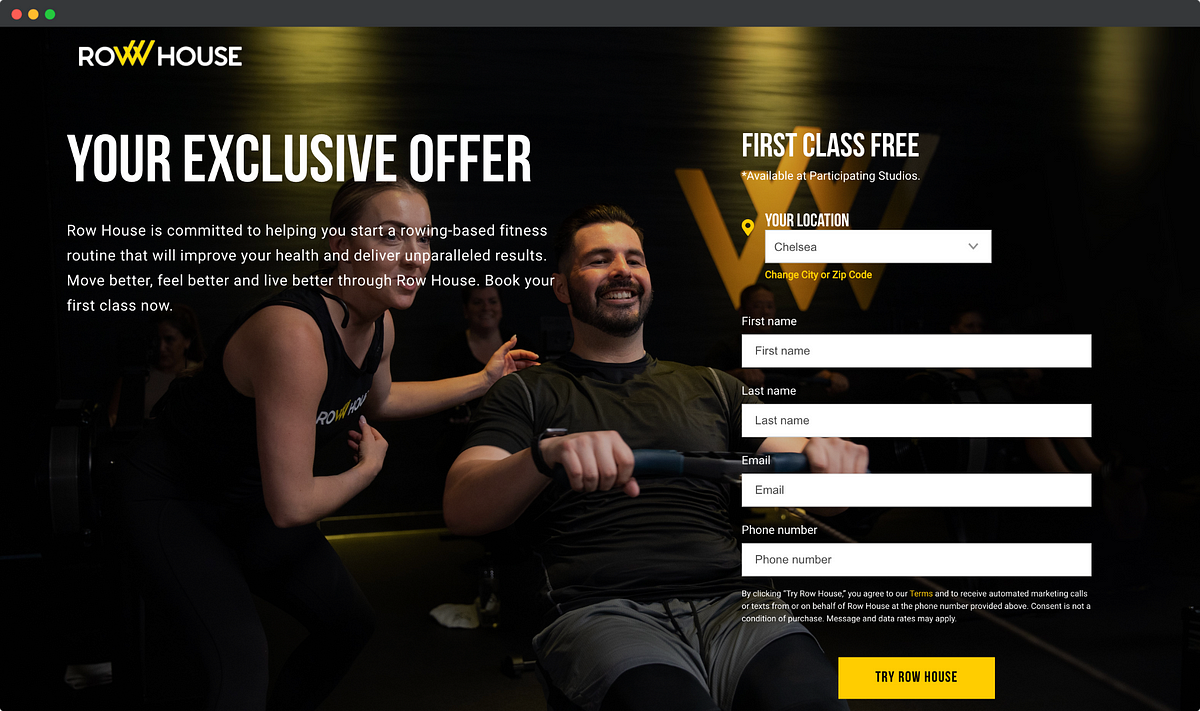
Source: medium.com
Understanding the psychology behind effective landing page design is crucial for maximizing conversions. Let’s examine three real-world examples of landing pages that masterfully employed psychological principles to achieve impressive results. These case studies will highlight the specific design elements, copywriting techniques, and target audiences that contributed to their success.
Airbnb’s Landing Page
Airbnb’s landing page is a prime example of effective design. Its target audience is incredibly broad, encompassing travelers, homeowners looking to rent out space, and everyone in between. The page immediately conveys a sense of trust and community through high-quality images of diverse people enjoying unique accommodations worldwide. The copy is concise and focuses on the benefits of using Airbnb – finding unique places to stay, connecting with local cultures, and experiencing authentic travel.
They cleverly use strong calls to action like “Find your perfect stay” and prominently display search bars to encourage immediate engagement. The result? A consistently high conversion rate, driven by a design that speaks directly to the desires and aspirations of its varied user base. The use of social proof, showcasing the vast number of listings and positive reviews, further reinforces the platform’s reliability.
HubSpot’s Landing Page for a Free Ebook
HubSpot, a leading inbound marketing software company, effectively targets marketing professionals with their landing pages offering free resources like ebooks. Their landing page for a free ebook, for example, typically features a clear and concise headline directly relating to the ebook’s topic (e.g., “The Ultimate Guide to Inbound Marketing”). The copy focuses on the benefits of downloading the ebook, highlighting how it will solve a specific problem or provide valuable insights relevant to their target audience.
They use a strong call to action, often a visually appealing button that clearly states “Download Now.” The form is kept short and simple, minimizing the friction for users. The use of social proof, showcasing the number of downloads or testimonials, further encourages conversions. The results often show a high conversion rate from visitors to leads, demonstrating the effectiveness of their targeted approach.
Dropbox’s Landing Page
Dropbox’s landing page, aimed at users needing cloud storage solutions, is another excellent example. Their target audience is diverse, ranging from individuals needing personal storage to businesses requiring collaborative tools. The page’s design is clean and uncluttered, focusing on the key benefits of using Dropbox: ease of use, security, and accessibility across multiple devices. The copy is concise and benefits-oriented, highlighting the problem Dropbox solves (managing files across devices) and the solution it offers.
They employ strong visuals, showcasing the simplicity and ease of use through clear screenshots and animations. A prominent call to action, often a “Sign Up Free” button, encourages immediate engagement. A crucial element is the incorporation of a free trial, reducing the perceived risk for potential users and boosting conversions. The high conversion rates consistently achieved reflect the page’s effective design and copywriting.
Comparative Analysis
| Landing Page | Target Audience | Key Strengths | Key Weaknesses |
|---|---|---|---|
| Airbnb | Travelers, homeowners | High-quality imagery, strong call to action, social proof, diverse appeal | Potentially overwhelming for users unsure of what they are looking for |
| HubSpot (Ebook Landing Page) | Marketing professionals | Clear headline, benefit-driven copy, short form, strong call to action, social proof | May require more sophisticated understanding of inbound marketing for optimal engagement |
| Dropbox | Individuals and businesses | Clean design, concise copy, strong visuals, free trial offer | May not appeal as strongly to users with specific, highly technical needs |
Ethical Considerations in Landing Page Design
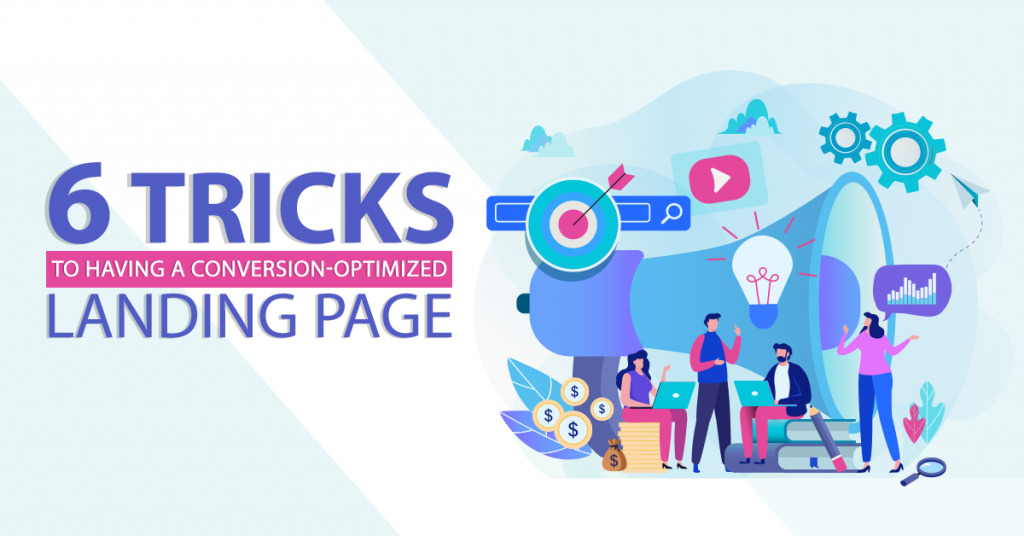
Source: tdhseo.com
Designing effective landing pages often involves understanding and leveraging psychological principles to persuade visitors to take a desired action. However, this power comes with a significant ethical responsibility. The line between persuasive design and manipulative tactics can be blurry, and it’s crucial to prioritize user well-being and respect for their autonomy. Ignoring ethical considerations can damage a brand’s reputation, erode user trust, and ultimately hinder long-term success.The ethical implications of employing manipulative psychological techniques on landing pages are substantial.
While subtle nudges can guide users towards beneficial actions, overt manipulation can lead to feelings of being tricked or deceived. This can result in negative user experiences, decreased brand loyalty, and even legal repercussions. Striking a balance between effective persuasion and ethical practices is paramount for sustainable growth.
Balancing Persuasion with Transparency and Respect for User Autonomy
Ethical landing page design hinges on transparency and respect for user autonomy. Users should be fully informed about what they are agreeing to and have the freedom to choose without feeling coerced. This means avoiding deceptive practices such as hidden fees, misleading claims, or pressure tactics. Clear and concise language, readily available information, and easily accessible opt-out options are essential components of an ethical approach.
Instead of employing manipulative techniques, focus on building trust by providing value and demonstrating genuine care for the user’s needs. For example, instead of using scarcity tactics (“Only 3 left!”), focus on highlighting the unique benefits of the product or service.
Examples of Ethical and Unethical Landing Page Design Practices
Consider two contrasting examples: an ethical landing page clearly Artikels the product’s features, pricing, and terms of service, providing multiple contact points for questions and concerns. The design is clean and uncluttered, focusing on providing valuable information. In contrast, an unethical landing page might use aggressive pop-ups, misleading headlines, and hidden fees. It might also employ dark patterns, such as making it difficult to cancel a subscription or find the privacy policy.
The difference is clear: one respects the user’s autonomy and provides transparency; the other prioritizes immediate conversion at the expense of user experience and trust.
Best Practices for Ensuring User Privacy and Data Security on Landing Pages
Protecting user privacy and data security is non-negotiable. This involves implementing robust security measures, obtaining explicit consent for data collection, and being transparent about how user data will be used. Complying with relevant data protection regulations, such as GDPR and CCPA, is crucial. Clearly stating your privacy policy and making it easily accessible is paramount. Avoid collecting unnecessary data and ensure that any data collected is stored securely and used responsibly.
Regular security audits and updates are also vital to maintaining a secure landing page. For instance, using HTTPS to encrypt data transmitted between the user’s browser and the server is a fundamental security practice. Additionally, employing strong password policies and implementing multi-factor authentication can further enhance security.
Final Wrap-Up
Mastering the art of landing page mind games isn’t about manipulation; it’s about understanding your audience and creating a user experience that’s both engaging and effective. By leveraging the principles of psychology, you can craft landing pages that resonate deeply, leading to higher conversion rates and a more successful online presence. Remember, ethical considerations are paramount; focus on building trust and providing value to your visitors.
Now go forth and create landing pages that not only look good but also achieve phenomenal results!
Frequently Asked Questions
What are some common cognitive biases exploited in landing page design?
Common biases include anchoring bias (using a high initial price to make a lower price seem more attractive), scarcity bias (creating a sense of urgency by limiting availability), and social proof (using testimonials and reviews to build trust).
How can I ethically use urgency in my landing page copy?
Instead of creating artificial scarcity, focus on genuine time-sensitive offers or limited-time discounts. Clearly communicate the offer’s duration and avoid misleading language.
What’s the best way to A/B test different landing page elements?
Use a platform like Google Optimize or VWO. Start by testing one element at a time (headline, button color, etc.) to isolate the impact of each change. Analyze your results using statistical significance to ensure reliable conclusions.
